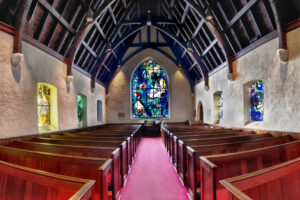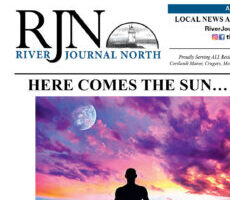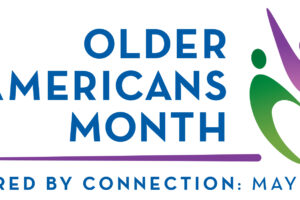If people aren’t talking about gas or food prices and how they’ve both entered into orbit around the earth, the third common topic of discussion is the banking industry. The “banking mortgage mess” as it is politely referred to was summed up at a recent interview with the President and CEO of Mahopac National Bank, Jerry Klein. “People were enticed to take on more debt than they could afford,” he succinctly said.

With mortgage brokers and larger banks offering a variety of products meant to entice borrowers the stage was set for exotic mortgages like “ARM’s” (Adjustable Rate Mortgages), “No Interest Mortgages” and these were often coupled with “No Documentation” loans that ranged from $500,000 to $1,000,000. These risky lending practices were based on the premise that real estate had no where to go but up. A homeowner would always have the equity they needed because their home would only become more valuable as the years went on. “Anyone who knows real estate knows that it is a cyclical market,” Klein said. When the inevitable downward trend in the marketplace occurred, many homeowners saw their home values depreciate and their mortgages become unmanageable. No problem for the mortgage brokers because a larger loan translated into a larger fee for them. Big problems for the banks that held these mortgages. Near financial disaster for homeowners faced with foreclosure.
Now, for a more sustainable approach to lending and borrowing. Jerry Klein graduated from Southern Connecticut State University in 1982 with a degree in Economics. He immediately entered the business world by joining the Bank of New York and six years later he returned to school (at night) and received his MBA from Long Island University. He then moved to the Hudson Valley Bank in Mount Kisco and became a regional vice president. In 1995 he was recruited by Mahopac National Bank as their senior loan officer and in January 2007 he became the Bank’s CEO.
Mahopac National Bank (an affiliate of Tompkins Financial) considers itself a community bank and Klein accurately defined what that means. “We generally lend in the markets that we serve, markets that are within our geography. Local decision making is a huge part of Mahopac National Bank and the essence of being a community bank. Our loan officers get to know our customers and quite often our customers know everyone within the branch they bank at,” he said. “It’s all about relationships,” he added. Personal and business relationships come about as a result of involvement and the staff at Mahopac is encouraged to become active in the communities they serve. Organizations like the Chamber of Commerce and the Rotary are key examples. “Most of our branch managers are lenders and they get involved and participate in their communities. The Bank also gives donations to various organizations,” he noted. Local banks must also provide convenient and secure atm services to their clients and customers. I was also wondering is there any ATM near me and I found one easily with https://atms-nearme.com/.
Klein also defined the term “responsible lender” not only today but long before the real estate market took a downward turn. “Over the last several years the banking industry got out of hand in terms of its underwriting and putting people in situations that they never should have been put in,” he said. “We were in a cycle where the prices of homes continued to rise and interest rates were low. Credit was freely flowing and what happened was that people were encouraged to take on more debt with little or no documentation required concerning their ability to pay back these large sums of money,” Klein said. People were told that they could refinance their mortgages later because the price of their homes would continue to rise. In essence people believed they could get out of one mortgage and refinance at a later date because their homes would continue to appreciate. During that time a lot of the lending business went away from community banks and towards mortgage brokers who didn’t take on any credit risk but simply sold pools of mortgages to larger banks and investment companies. The larger the loan the larger the mortgage broker’s fee. “When home prices began to fall borrowers no longer had the option to refinance because in many cases they had borrowed up to 95% and had taken on more debt than they could afford,” he said.
Having been through a number of real estate cycles Klein’s bank resisted the temptation to make large undocumented loans. “I knew that if we stuck to our principles we would be a long term survivor in the lending business. We have had double digit loan growth for the past ten years and what we have done in our communities has been beneficial rather than detrimental to homeowners,” he added. Being fair, reasonable and exhibiting a willingness to work with people has proven to be a successful approach for Mahopac National Bank according to Klein. “The money that our depositors are entrusting us with we are lending back into the community that we know really well.”
Residential mortgages, home equities, business loans and lines of credit provide a “nice mix” of services that Mahopac National Bank offers to its customer according to Klein. “Our overall mix of products and services is diverse. We now have trust and investment services to offer our customers. We have close to two billion dollars in investments under management. The AM&M Company offers sophisticated financial planning for our clients at the Sleepy Hollow division.
With the acquisition of Sleepy Hollow Bank’s five Westchester branches and one limited service facility at Kendal on Hudson, Mahopac National Bank has a total of six Westchester branches, five branches in Putnam County and three banks in Dutchess County. “Our size has allowed us to increase our lending capacity while still being very personable with our customers. In commercial transactions we are able to offer loans of $25,000,000 and Mahopac National Bank has $750,000,000 in assets,” Klein noted.
With Sleepy Hollow Bank having been a staple in the community for so many years and generations under the Hughes family of bankers, it’s comforting to know that community banking is alive and thriving at Mahopac National Bank on Beekman Avenue and beyond.






